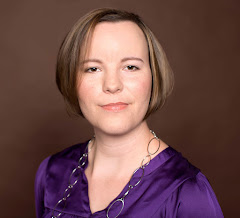I read this in an Ecojustice pamphlet earlier this week at an event the charity held about environmental rights and the injustices faced by the residents of the Aamjiwnaang First Nation. I couldn't get this hole in the Charter out of my head.
Ecojustice is Canada's only national charity that uses the law to defend our environment. Margot Venton, a staff lawyer for their vital work, explained that when countries recognize the Right to a Healthy Environment in the law, standards improve. Among her international examples was France. The country has banned fracking as well as the use of pesticides in public places, with some purposeful exceptions.
The European Court of Human Rights has done work on RHE, recognizing that everyone should have clean air, be free from pollution and have a functioning ecosystem that also allows for cultural practices. (Check out Article 11 of the Court's manual. It's fascinating.)
My key takeaway from Margot's talk was that we (citizens) and policymakers need to think of environmental rights as human rights and defend them as such. It would be easier to argue this in a legal setting and put it into action if it was part of our constitution.
Learning about the work other countries are doing to improve the health of their communities gave me hope that Canada can improve its standards, especially if the public uses their voices. Grassroots community activists Ada Lockridge and Ron Plain are a great example. They are clients of Ecojustice and they shared their stories and work at the event, which focused on their case.
 |
| Photo of Ada Lockridge and Ron Plain © Garth Lenz via Ecojustice |
The industrial pollutants in their area are also linked to reproductive and developmental toxicity. Other frequently reported health problems include high blood pressure, headaches, attention deficit disorder and thyroid and kidney problems. Elaine also discussed the social health effects of the pollution, such as stress, anger and fear of the health impact and the injustice.
So where does regulation come into play in all this? Ontario will look at the effects of each plant mentioned in a complaint separately, but not the cumulative effects of all the petrochemical industry pollutants in their area. Ron and Ada want that to change and they are challenging the Ministry of the Environment.
There are about 800 residents of Aamjiwnaag and industrial facilities in their area make up to approximately 40 per cent of Canada's petrochemical industry. The World Health Organization said "the people of Sarnia breathe some of the most polluted air in all of Canada." (Ecojustice, background on Chemical Valley and Ron and Ada's case)
Nothing in Ron and Ada's case surprised me. I majored in Health and Society at York University and heard and read about cases of what my professors called environmental racism, the placement of minority groups such as indigenous communities and people with low socioeconomic status in polluted or otherwise environmentally unsound areas. This limits or erases affected people's ability to practice related aspects of their culture, such as hunting and fishing.
This is an issue of dignity, as well as health. Ron shared that these cultural practices are rites of passage for indigenous people and he said that his father's first kill took place in what is now a chemical pond. I learned at York that this inability to hunt and fish can also have implications on the affected people's diet if they don't have access to fresh, healthy food.
The medical and social implications of Chemical Valley on the people can be interpreted in law as human rights issues under the Charter and that is what Ecojustice is trying to do.
How can we help? Elaine recommends that we track and report environmental issues if we notice them. Also, write to your local government representatives. Make sure that they know this issue is important to you.
Huge thanks to Ecojustice and Ada Lockridge and Ron Plain for this powerful event.
Read more on the air in Sarnia.

I enjoyed this. The whole idea of a RIGHT to a healthy environment seems alien to most of us down here in the states, where our politicians generally have an attitude of "Where there's smog, there's business."
ReplyDeleteIn fact, in the neighboring state of Louisiana, the state government took steps to ban even the monitoring of environmental hazards. They did things like banning "lung buckets," which alllowed people to sample the air for testing around the state's numerous refineries. They banned "third year certification" at the state's law schools because the students were using their law school clinics to work on environmental justice issues.
It could happen anywhere.
Thank you, Katy. The all-too-common corporate attitude to pollution, or any environmental issue, is so, so frustrating. It really upsets me to read about instances of industry or government obstructing the documentation of health effects.
DeleteI can definitely see why people in North America would be aghast at the idea of a RIGHT to a healthy environment as so many communities don't seem to have a seat at the table, except maybe in the PR sense of accountability. Ecojustice is working hard to change that.